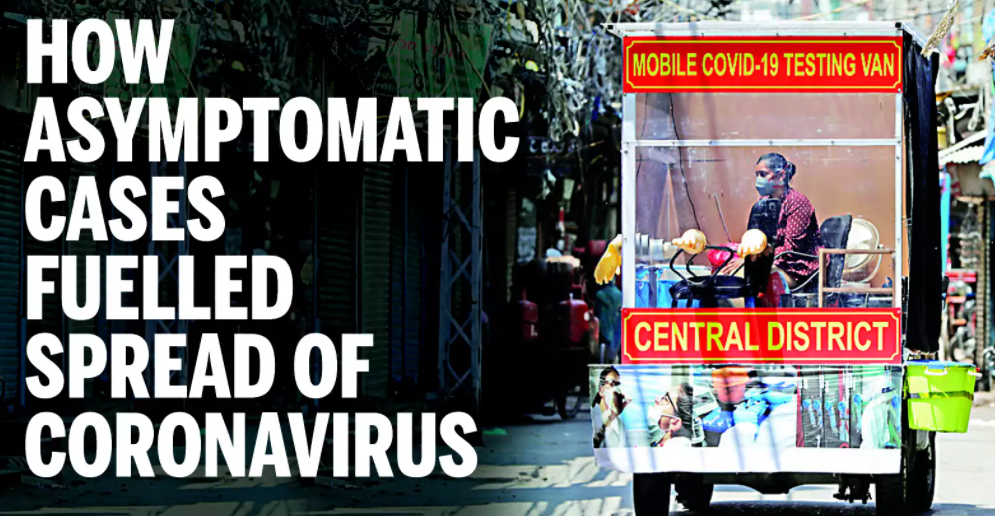Coronavirus: Tips of Coronavirus Asymptomatic Infections

What is Asymptomatic infection?
Asymptomatic infection of the new coronavirus refers to those who have no relevant clinical manifestations, such as fever, cough, sore throat, and other self-perceived or clinically recognizable symptoms and signs, but the respiratory tract and other specimens have tested positive for the pathogen of the new coronavirus. Including the 14 days of isolation and medical observation, there are no symptoms and signs that can be self-perceived or clinically recognized; there are two types of asymptomatic infections in the incubation period.
As time goes by, some asymptomatic infections will develop related symptoms and turn into confirmed cases. Such people are in the incubation period before they become infected. According to the diagnosis and treatment guidelines for new coronavirus pneumonia, the incubation period is generally 1 to 14 days, mostly 3 to 7 days. Some people still have no symptoms until the nucleic acid test turns from positive to negative, that is, as protective antibodies are produced and the virus is gradually eliminated, they are immune to the new coronavirus.
How to treat asymptomatic infected people?
- Prevent Coronavirus Spreading With Right Mask: 3 Points to Know
- Steps to help prevent the spread of COVID-19 if you are sick
- Test Kit for Coronavirus: SARS-CoV-2 Nucleic Acid Detection Kit (Rapid PCR Fluorescence Method)
- Symptoms (COVID-19)
- How does ZeroVirus protect us from virus?
The existence of asymptomatic infections is the rule of infectious diseases. Measles, influenza, SARS, etc. all have a certain percentage of asymptomatic infections. They are infectious to a certain extent, but the infectiousness and transmission are limited, and will not cause large-scale population spread.
There are five main ways to detect asymptomatic infection:
- Medical observation of close contacts
- Investigation of cluster epidemics
- Tracing the source of infection
- Test some people with travel or residence history in areas where new coronary pneumonia cases continue to spread
- Relevant persons found in epidemiological investigations and opportunistic screening
As long as hospitals and disease control institutions fully implement the “four early” requirements for infectious disease prevention and control, that is, early detection, early reporting, early isolation, and early treatment, the risk of transmission of asymptomatic infections can be well controlled.
The public must be aware of the risk of infection, but they do not need to worry too much, and more importantly, personal protection.
Are asymptomatic infections contagious?

Asymptomatic infected persons have a certain amount of the virus in their bodies, and there is still a risk of transmission in close contact without effective protective measures.
Recent studies have shown that: on average, each confirmed patient can transmit 3 patients, and on average, each asymptomatic infection can transmit less than one patient, and the infectivity of asymptomatic infection is equivalent to 1/3 of the confirmed case.
The proportion of asymptomatic infections is very low, the amount of virus carried is relatively small, the infectivity is much weaker than that of symptomatic people, the harm of transmission is relatively small, and they will not become “super spreaders.” Even if it is infected by an asymptomatic infected person, it is often mild and the overall viral load will be much lower.
How to avoid being infected by asymptomatic?
Although asymptomatic infections are not easy to detect and are contagious, they can only be infected if they are in close contact with each other without protection.
Protection should strengthen self-protection and awareness of health and civilization, and develop the good habits of washing hands frequently, wearing masks, frequent ventilation and disinfection, and maintaining a safe social distance (1 to 2 meters).
In addition, you must be self-disciplined. If you feel symptoms, especially those at risk, you must take the initiative to report and actively cooperate with screening and treatment.
Why do some people find positive after repeated nucleic acid tests?
Whether it is a viral or bacterial infection, modern medicine can diagnose it 100% less than once. The amount of virus in any infectious disease is different in different time periods. It is very likely that the actual test will not be able to find out at first, and it will not be found until about the 7th day. The reason is not only related to the detection ability of the detection method, but also closely related to the collection, storage, and transportation of specimens, as well as the course of the disease and the characteristics of the virus.
